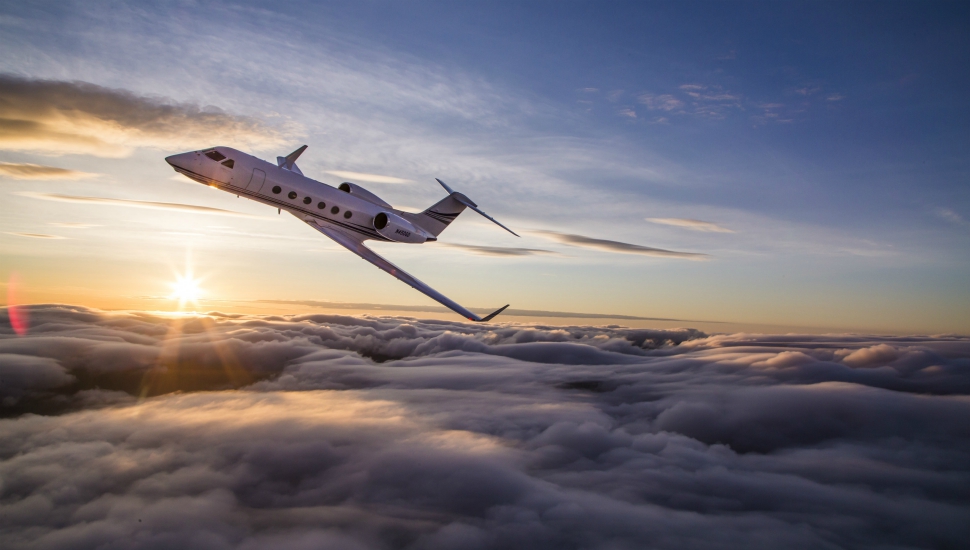Although Textron Aviation’s 17 July decision to suspend development of the large-cabin Hemisphere business jet is a setback for the airframer, its exit from the segment does create an opportunity for several other manufacturers.
Textron’s decision was triggered by the failure of Safran’s troubled Silvercrest engine to meet the requisite performance specifications for the $35 million aircraft – which was specifically designed for the 9,000-12,000lb (40-53kN)-thrust turbofan. The move, for the time being at least, dashes Textron’s hopes of entering the large-cabin segment and capturing the valuable move-up market at the top of its seven-strong Citation family.
Launched in 2015, the Hemisphere was billed as the first clean-sheet design introduced in the $30-40 million category for more than 25 years. Two aircraft vie for supremacy in the segment, both legacy designs: the Bombardier Challenger 650 – the market leader and fifth iteration of the Challenger 600 introduced in the late 1970s – and Dassault’s Falcon 2000LXS, the latest version of the large-cabin 2000 family, launched in 1989.

Textron Aviation
With a promised class-leading 4,500nm (8,330km) range, 516kt (955km/h) cruise speed, and 1.88m (6ft 2in) stand-up cabin, the Hemisphere looked more than capable of taking market share from its two rivals.
“The Hemisphere represented a revenue opportunity of more than $1 billion a year, lost, at least for now,” says Rolland Vincent, president at aerospace analysts Rolland Vincent Associates. “[Cessna] customers who want to move into this segment will have to wait another day for Textron to play in this space.”
The Hemisphere’s exit has, however, created an opportunity for other manufacturers to bring something new to the segment. “Somebody is going to be the first mover to seize this opportunity,” says Vincent. “Textron is not that player now, but there are at least three OEMs that are no doubt watching these developments like hawks.”
Chief among these is Bombardier, which will want to protect its market dominance. Vincent describes the GE Aviation CF34-3B-powered Challenger 650 as a “very reliable, popular, widely flown boardroom, that long ago established the widebody standard for the industry”. However, to call it “a little slow, a little heavy, and a little long in the tooth is an understatement”, he says.
To bolster its appeal, the programme could undergo a major revamp to include new avionics and engines, possibly a lower-thrust application of the Rolls-Royce Pearl 15 turbofans that will power Bombardier’s in-development, long-range Global 5500 and 6500 – scheduled for service entry later this year.
Gulfstream is a strong contender for a new model in the $30-40 million price bracket. It pulled out of this segment in 2016, after calling time on the GIV-derived G450, in favour of the more capable, super-wide-cabin G500. That departure, however, left a yawning gap in Gulfstream’s product line between the $25 million super-midsize G280 and $50 million G500.

Gulfstream
“Whether they address this gap with a new aircraft is hard to say,” says Vincent. “I would, if I was interested in protecting the entry point into the large-cabin segment and further frustrating the competition, call it a G400.”
Embraer has made no secret of its desire to develop new products at the top end of its seven-strong business jet family, with the slow-selling Legacy 650E – a business jet version of the long out-of-production ERJ-135 regional jet – ripe for replacement with an innovative, large-cabin design. The Brazilian company will not be short of investment dollars either, thanks to Boeing’s purchase of an 80% stake in its commercial aviation unit – scheduled for completion by year-end – which is expected to generate $1 billion in net cash for Embraer to plough back into new programmes
Dassault, however, is unlikely to introduce a new Falcon in the space – for the time being, at least – but a revamp of the 2000LXS is a possibility. The airframer’s engineering focus is on a new long-range, wide-cabin business jet at the top of its range, and on the highly anticipated 6X, which Dassault is set to bring to market in 2022. The Pratt & Whitney Canada PW812D-powered aircraft replaced the 5X in Dassault’s line-up in 2018, after delays with the Silvercrest engine also led to that type’s termination.
Despite its setback with the Hemisphere, Textron’s outlook remains robust. Through its venerable Cessna and Beechcraft brands, the airframer is a high-volume player in the industry, producing more light and midsize business jets and turboprops than any other manufacturer. Product development is also thriving, with two new turboprop programmes – the single-engined, high-performance Denali and SkyCourier twin due to make their first flights later this year.
“Textron Aviation is the proverbial 800lb gorilla in the market,” says Vincent. “They have tremendous reach into the customer base in almost every region of the world, and have a loyal following.”

Textron Aviation
The company now has time to build a large installed base of customers for its super-midsize Longitude – for now its flagship product, which is scheduled for service entry before the end of September.
Vincent says this will help to increase the pool of customers looking to move up to a “larger and more capable aircraft”, when the time comes for Textron to revisit the large-cabin arena. “When late to the party, I like to think that it is wise to bring a very nice bottle of wine,” says Vincent. “A fine, nicely aged Bordeaux seems like a wise choice.”
Source: Flight International


























